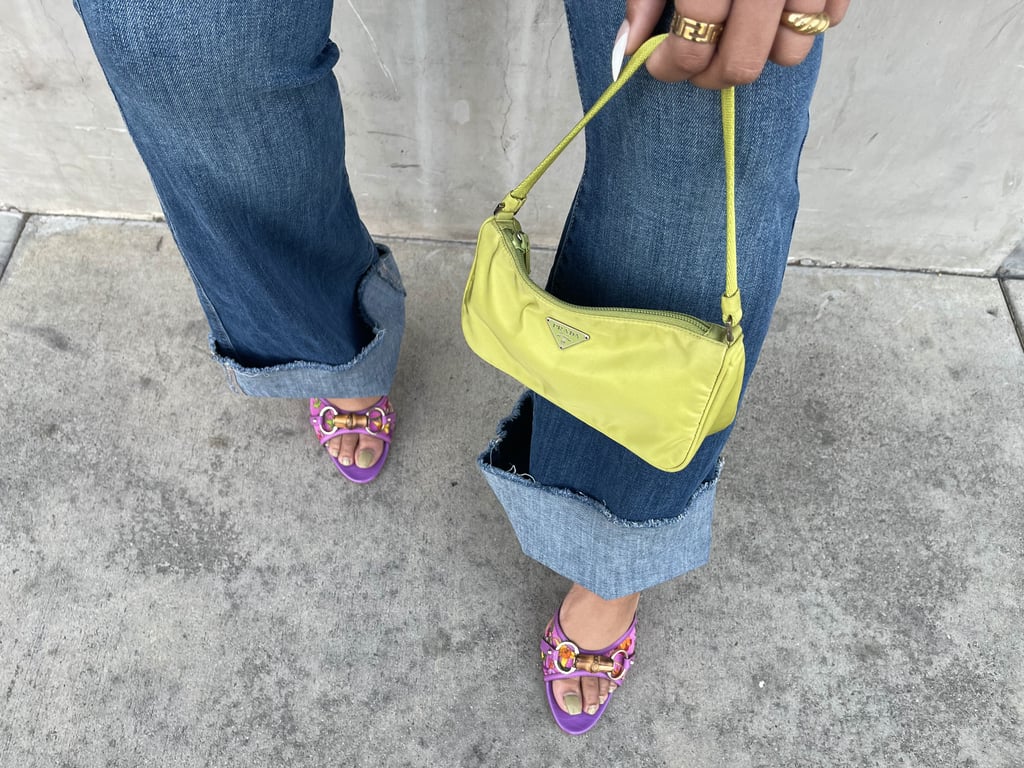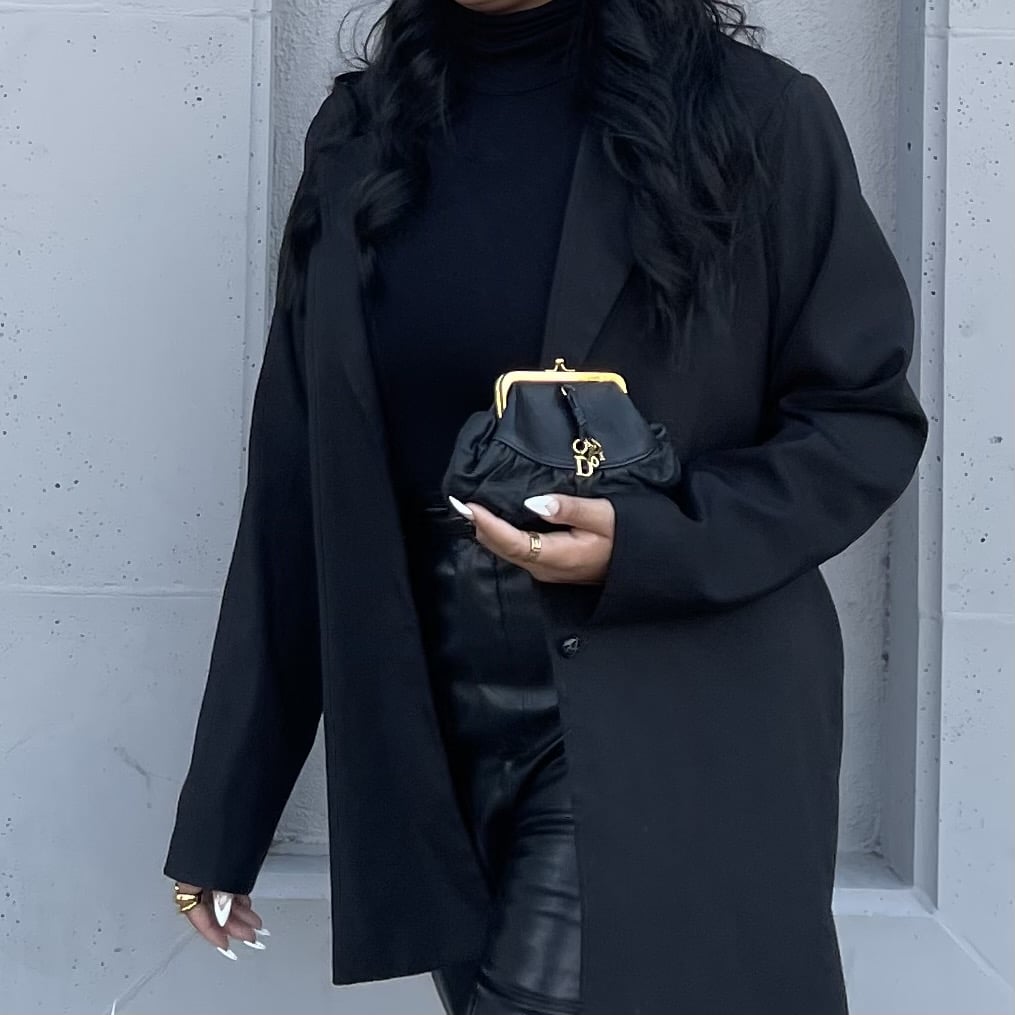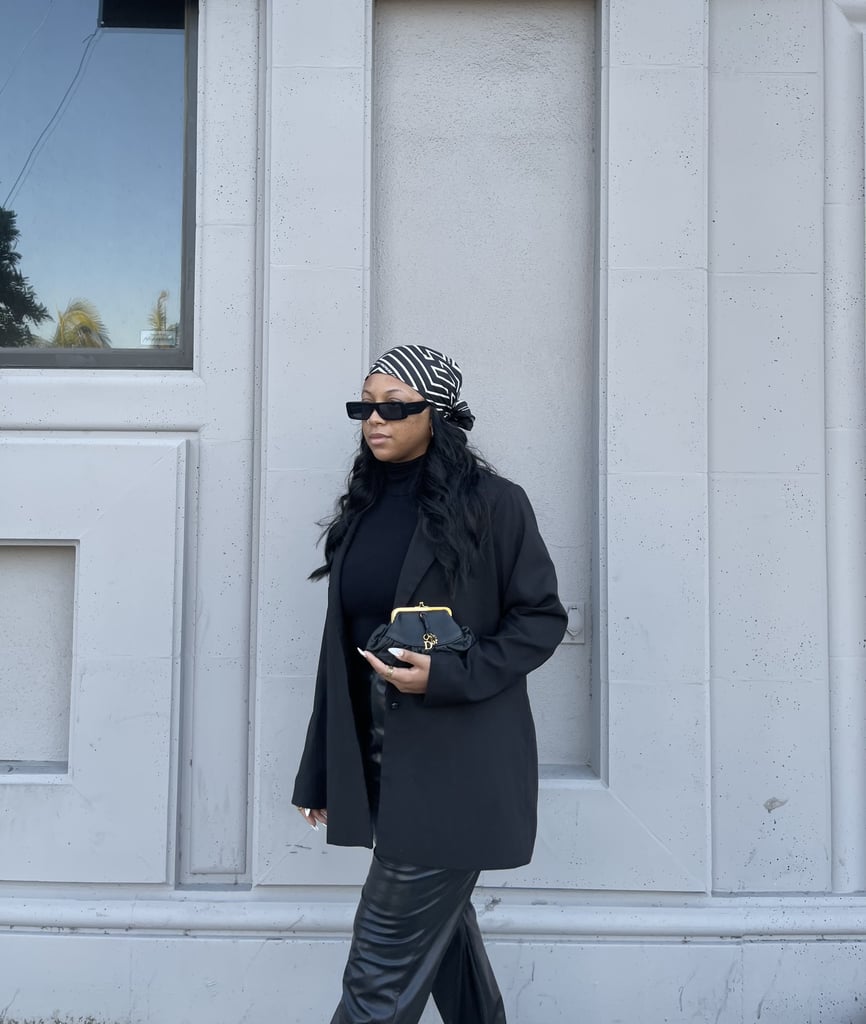A lot has changed in the resale world as of late. Long gone are the days when Goodwill was the primary option for finding pre-loved treasures at hefty discounts. In its place, there are a bevy of resale clothing sites and marketplaces [1] that boast millions of items to shop at any given moment.
Shopping pre-owned can be intimidating. With a sea of inventory [2] and new shops entering the market at rapid speed (from traditional e-commerce to Instagram boutiques), it's totally understandable why some may be hesitant to shop secondhand designer items. But throughout my countless thrifting sprees (aka my method of coping with being stuck inside), I've discovered that resale marketplaces aren't particularly difficult to navigate — you just need the right guide. And I'm more than willing to share my tricks of the consignment trade [3].
Up until the start of the pandemic, I'd always been apprehensive about authenticity when it comes to peer-to-peer shopping. That fear quickly evaporated when I dove headfirst into the pre-owned fashion world with Tradesy, Poshmark, Vestiaire Collective, Grailed, The RealReal . . . the list goes on (once you start, you really can't stop). Becoming the proud new owner of a gorgeous vintage leather Dior clutch certainly didn't hurt either (disclaimer: this Tradesy transaction was comped). While many resale marketplaces are strikingly similar, there are key differences to consider if you're ready to join the consignment movement.
Scroll through to see my takeaways for successfully shopping secondhand everywhere on the interweb, plus a little insight into how to avoid counterfeit items.
Scour the Inventory
I've been able to find a healthy mix of new and old items across most online marketplaces, from NWT By Far handbags to '90s Gucci bamboo heels — you just need to know where (and how) to look. I recommend scouring new arrivals and specifying "vintage" in your keyword search as a surefire way to find the real archival treasures. Otherwise, shopping the collections curated by staff editors is a fast track to some of the best offerings.
Unless you're on the hunt for a heavily on-trend style or ultra-rare vintage piece, you won't be hard-pressed to find something chic. This is especially true of handbags, which resale sites seem to carry in droves.
Compare Prices
The exhilarating part about shopping pre-owned, besides that euphoric moment when you find a hidden gem, is that saving grace for your bank account. When it comes to vintage finds, you can save anywhere from 70 to 90 percent off the retail price. I've found that costs tend to be higher among marketplaces that set their own prices and hold the inventory themselves, as opposed to peer-to-peer selling (and even more so on smaller platforms). However, it's not uncommon to come across items on peer-to-peer sites with prices that just don't compute, because even though some platforms give the seller price recommendations, staying within the suggested threshold isn't mandatory.
It's worth noting, though, that most peer-to-peer platforms leave room for bargaining with the seller via the "Make an Offer" function or simply through private messageing, allowing you the opportunity to score even more of a deal. I used to bypass this option out of sheer laziness, but I've discovered that not only do most sellers respond fairly quickly — many of them are willing to drop their prices or provide a compelling counteroffer.
Pay Attention to Seller Communication
I'm personally partial to marketplaces that stock all inventory in a warehouse, otherwise shipping times to be hit-or-miss when coming directly from the seller. (Shipping times are especially slow when the seller is shipping from a country outside of yours, which is to be expected, but still undesirable.)
When shopping peer-to-peer, unexpected cancellations are also to be expected. You are, of course, ultimately given back your funds, and it's helpful that each platform credits you automatically without any additional action needed on your part.
Always Authenticate
Your biggest concern when shopping pre-owned is probably whether or not an item on your wishlist is authentic, and understandably so. The good news is that most reputable resale marketplaces have a policy in place to guarantee the authenticity of their inventory, whether that means authenticating every item in-house or refunding you in the event that your purchase is deemed inauthentic by a third-party professional.
Tradesy uses software technology to automatically identify and remove inauthentic items from its platform, with a 99.7 percent accuracy rate. Vestiaire Collective ships each item to its corporate office where it is first authenticated in-house and then sent to you (it should be noted that there is an additional fee for this). All items over $500 purchased from Poshmark are first shipped to its headquarters by the seller for authentication.
While I take comfort in money-back guarantees, I always do my best to ensure that I'm not purchasing a replica to begin with (TBH, it's just not worth the hassle). I spent years manageing a local-owned designer handbag resale shop where confirming the authenticity of an item before passing it off to a third-party was quite literally my job. I learned during that time the importance of being able to spot poor quality versus superb quality, which you could just as well learn from studying pieces already in your closet, or combing designer collections online and familiarizing yourself with the structure of each piece.
While quality can be hard to judge from a photo, blatant giveaways of replica handbags are often poor stitching, incorrect logo fonts or sizes, incorrect interior fabrics, and incorrect or the altogether absence of serial numbers and date codes. It's important to note, however, that the presence of a date code or a serial number doesn't exactly guarantee authenticity either. Often, these numbers have formulas that replica manufacturers have either failed to replicate properly or were thorough enough to replicate to a tee, so the aforementioned factors are just as important. When in doubt, consult handbag review sites like PurseBlog that are dedicated to dissecting the nitty-gritty of designer logos and identification codes.
I'm also a strong advocate for authenticating my purchases through a third-party service (I swear by Authenticate First), regardless of whether or not I'm suspicious of an item's authenticity. Chalk it up to bad experiences with eBay and Etsy, but IMHO the extra $15 is worth the peace of mind. Plus, I've lost far more money in the past from return fees when shipping back replica items.
Manage Your Expectations
I've rarely been resale catfished, aside from the oft-feared inauthentic items (live and learn). An item's condition can often be hard to gauge on sites like The RealReal, where photos are professionally shot and you're unable to communicate directly with sellers. But I find that platform tends to be more selective about its inventory in the first place, and I've managed to always find pieces with minimal wear, and even the coveted NWT, on The Real Real.
Sure, going the pre-owned route requires a bit more leg work — researching, pre-purchase inspecting, a little bartering, and the requisite third-party authentication step, but it's worth it to build a vintage collection you can resell yourself at a later date, or maybe pass down to a loved one in the future. What's more, you're guaranteed to find one-of-a-kind designs along the way that you likely didn't even know existed. I'm not saying this will become your new favourite lockdown hobby, but I'm not saying it won't, either. Good luck out there.






